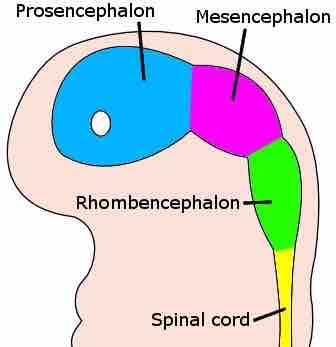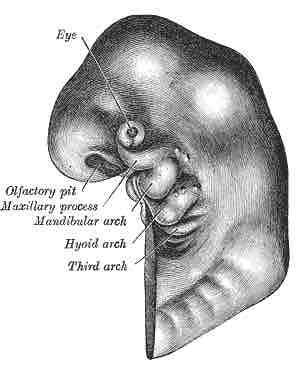Placentation
Trophoblast cells surrounding the embryonic cells proliferate and invade deeper into the uterine lining. They will eventually form the placenta and embryonic membranes. At the end of the fourth week the yolk sac presents the appearance of a small pear-shaped vesicle (the umbilical vesicle) opening into the digestive tube by a long narrow tube, the vitelline duct.
The chorion undergoes rapid proliferation and forms numerous processes. The chorionic villi, which invade and destroy the uterine decidua and at the same time absorb from it nutritive materials for the growth of the embryo. Until about the end of the second month of pregnancy the villi cover the entire chorion, and are almost uniform in size, but after this they develop unequally.
Mesencephalon Development
Late in the fourth week of gestation, the superior part of the neural tube flexes at the level of the future midbrain, the mesencephalon. Superior to the mesencephalon is the prosencephalon (future forebrain) and inferior to it is the rhombencephalon (future hindbrain). The optical vesicle (which will eventually become the optic nerve, retina, and iris) forms at the basal plate of the prosencephalon.

Embryo brain at four weeks
At four weeks the embryo's brain can be differentiated into the proscephalon, mesencephalon, and rhombencephalon. A white circle represents the area of the optical vesicle.
Pharyngeal Arch Development
The embryonic heart attains functionality and starts beating at 22 days after conception (about five weeks after the last menstrual period). It can sometimes be seen as flickering in the embryonic chest by an ultrasound performed during the fourth week after conception.
During the fourth week of development, the first pharyngeal arch, also called the mandibular arch, is the first of six pharyngeal arches that begins to develop. It is located between the stomodeum and the first pharyngeal groove.

Developing fetus
A schematic of a developing fetus with the first, second, and third arches labeled.